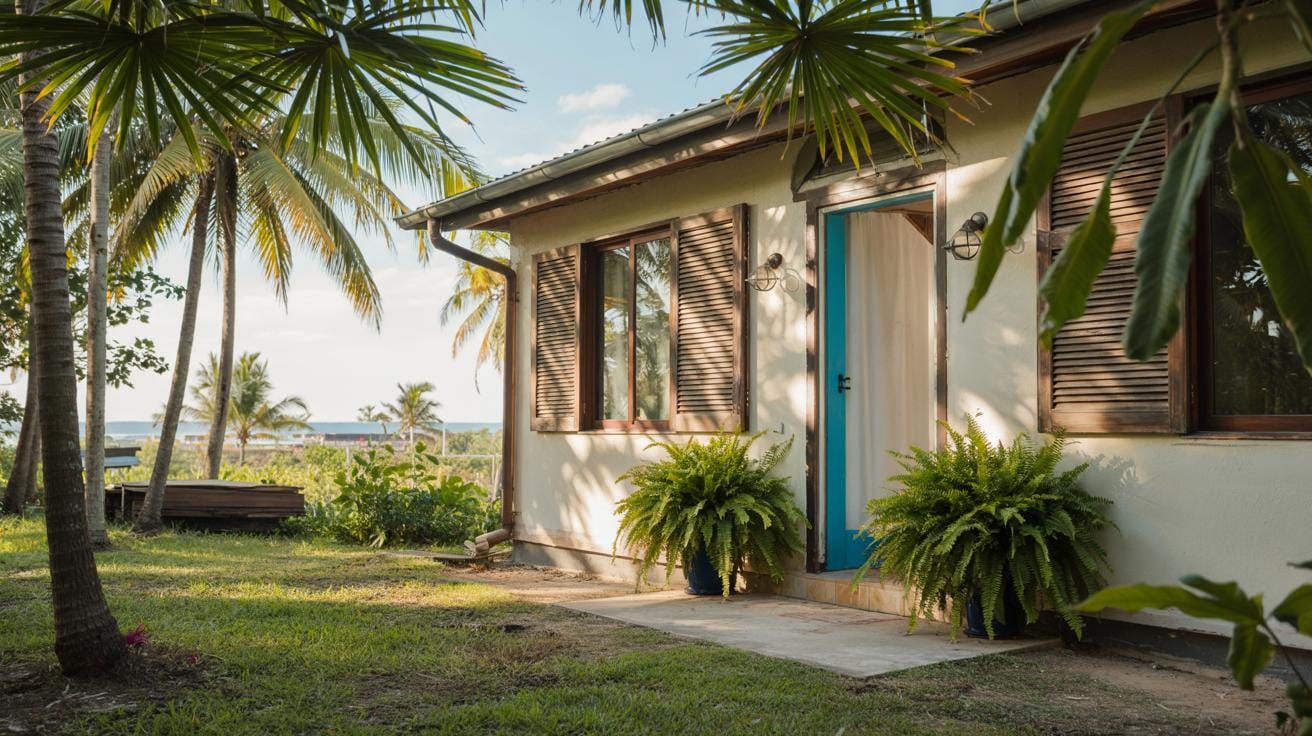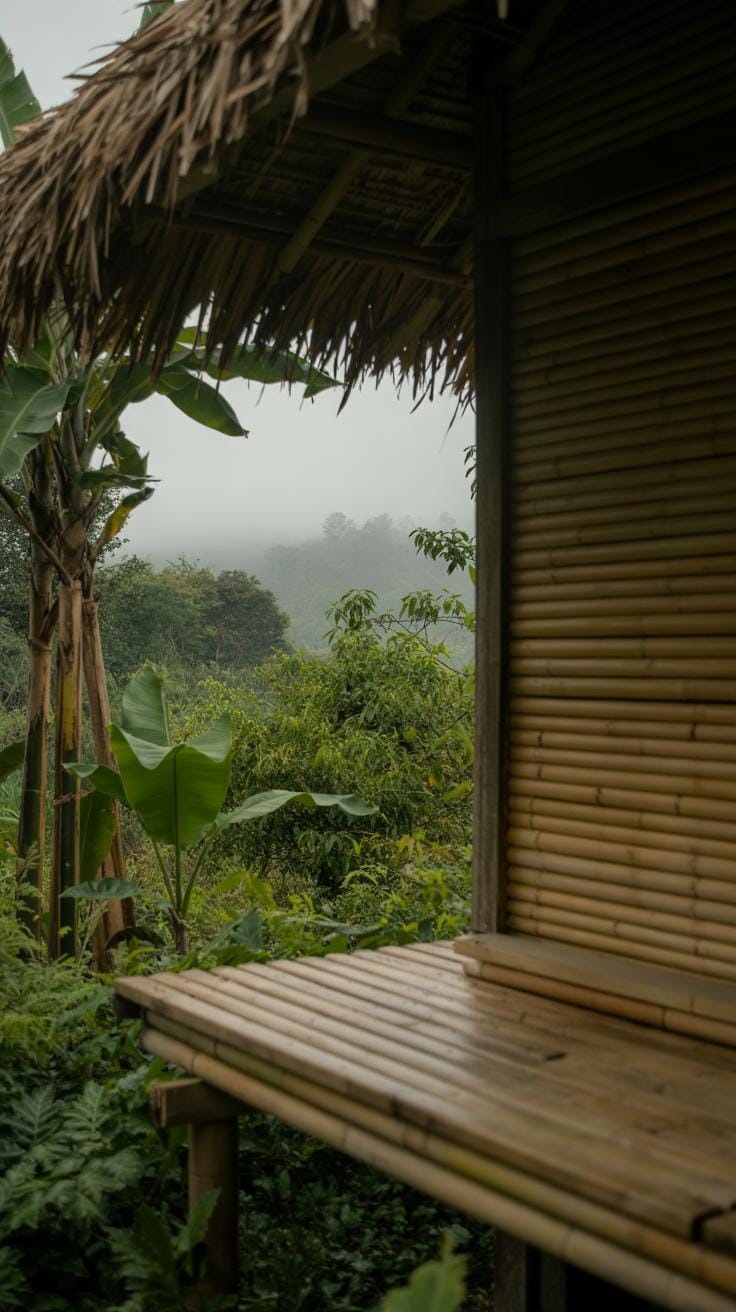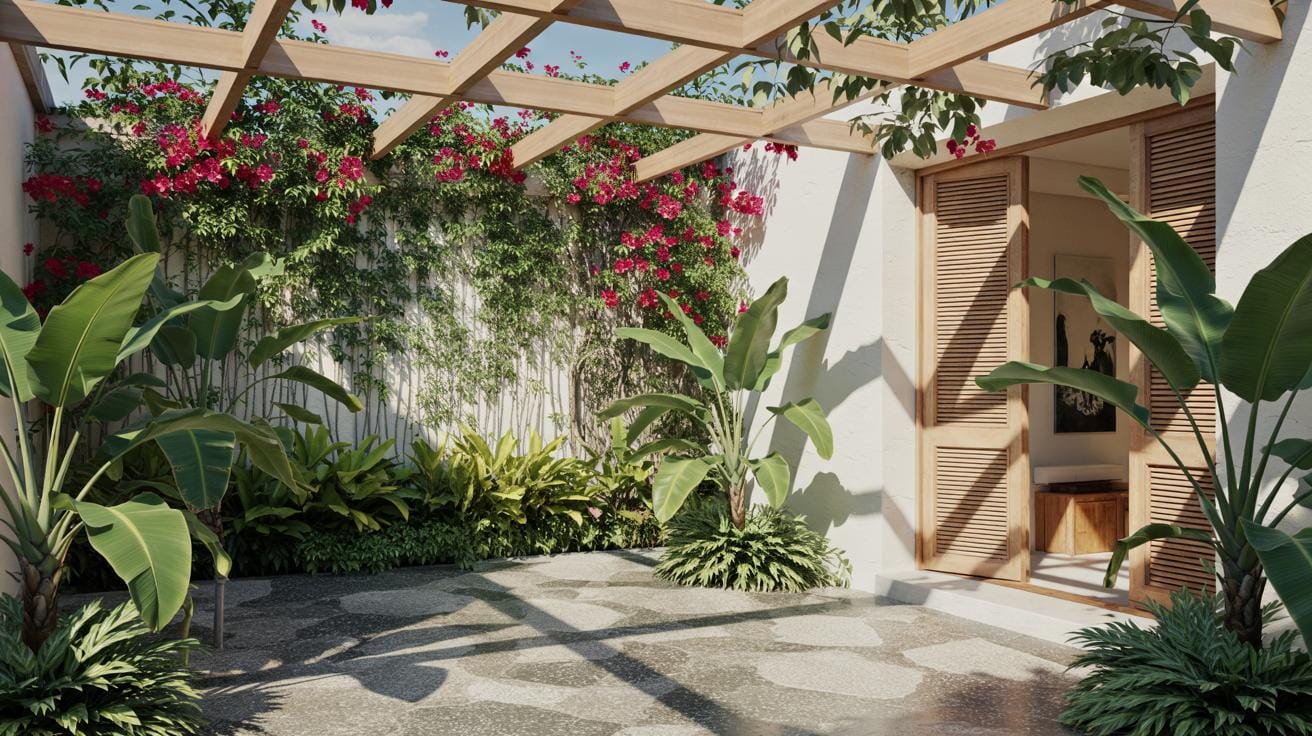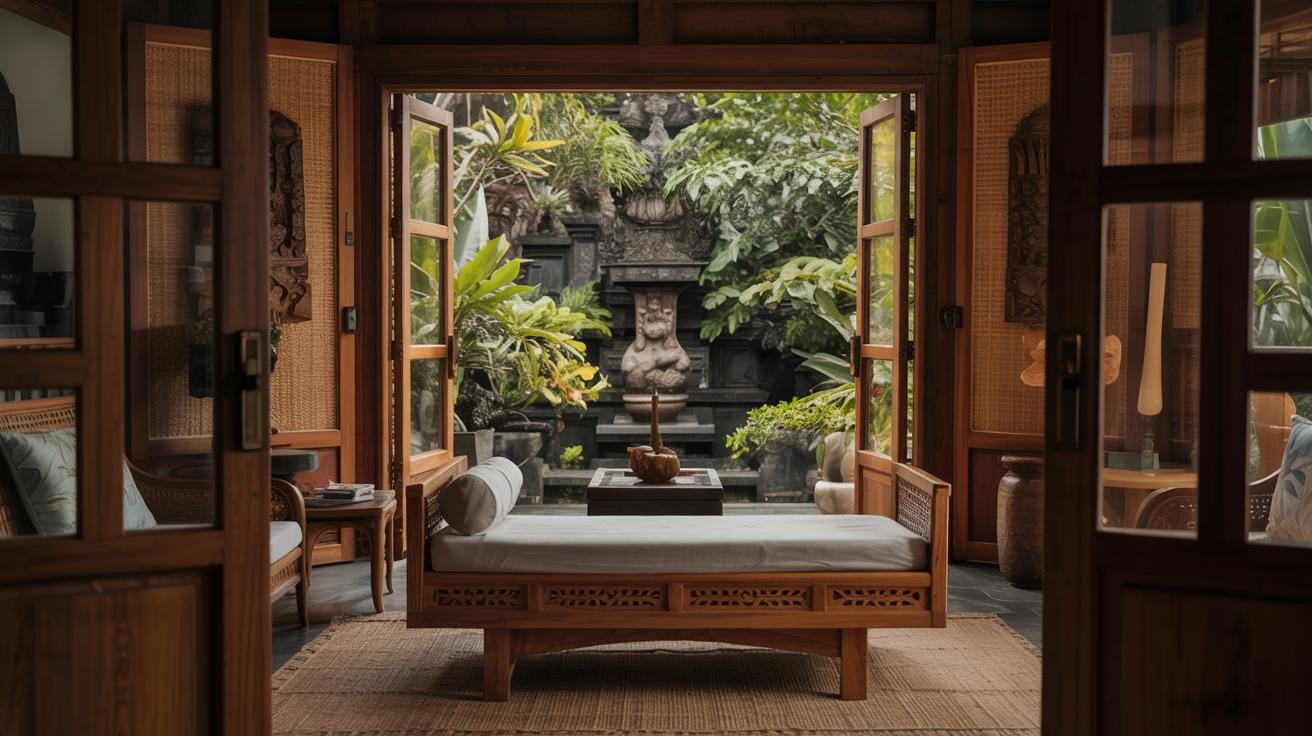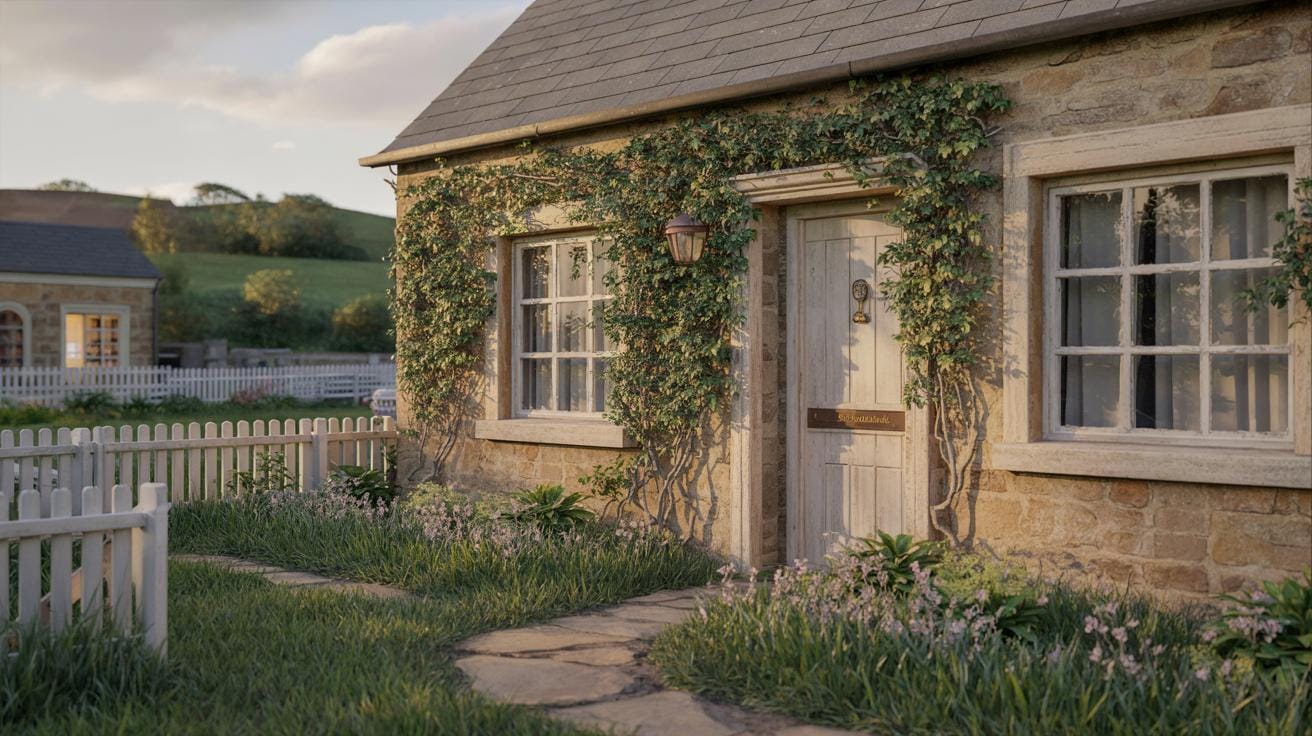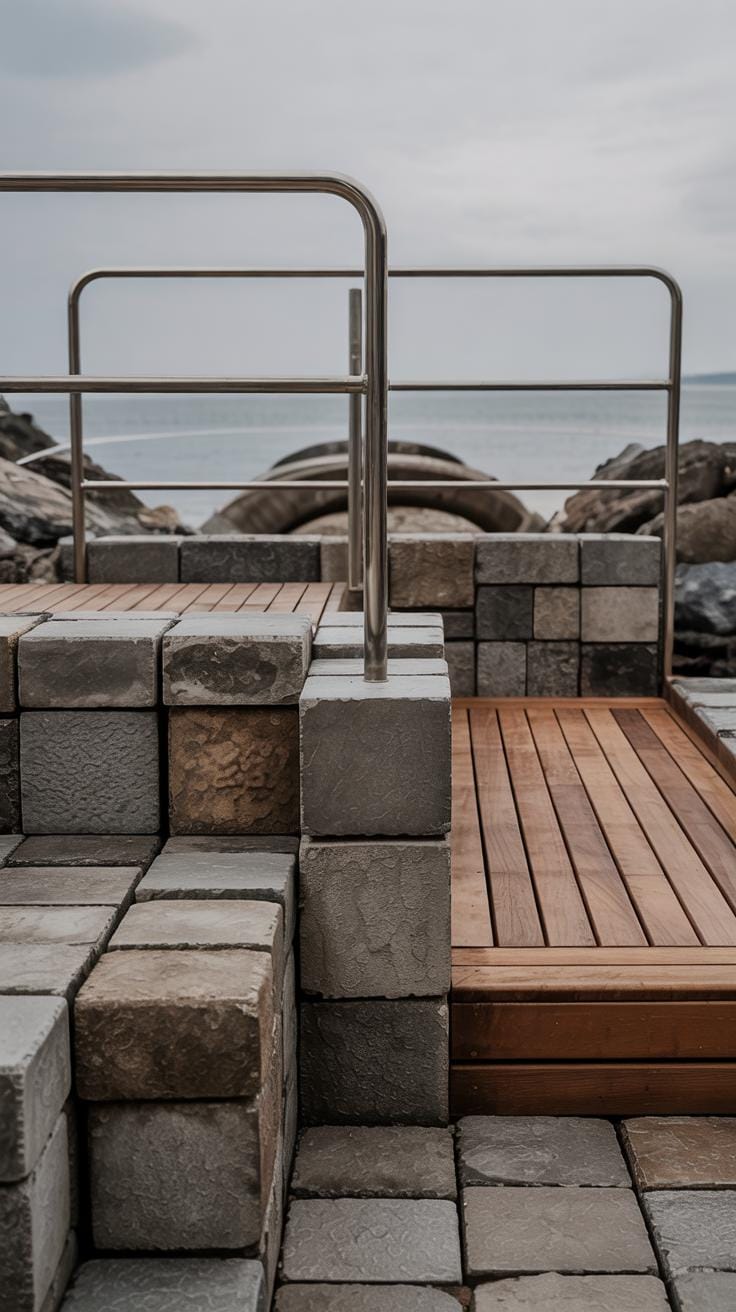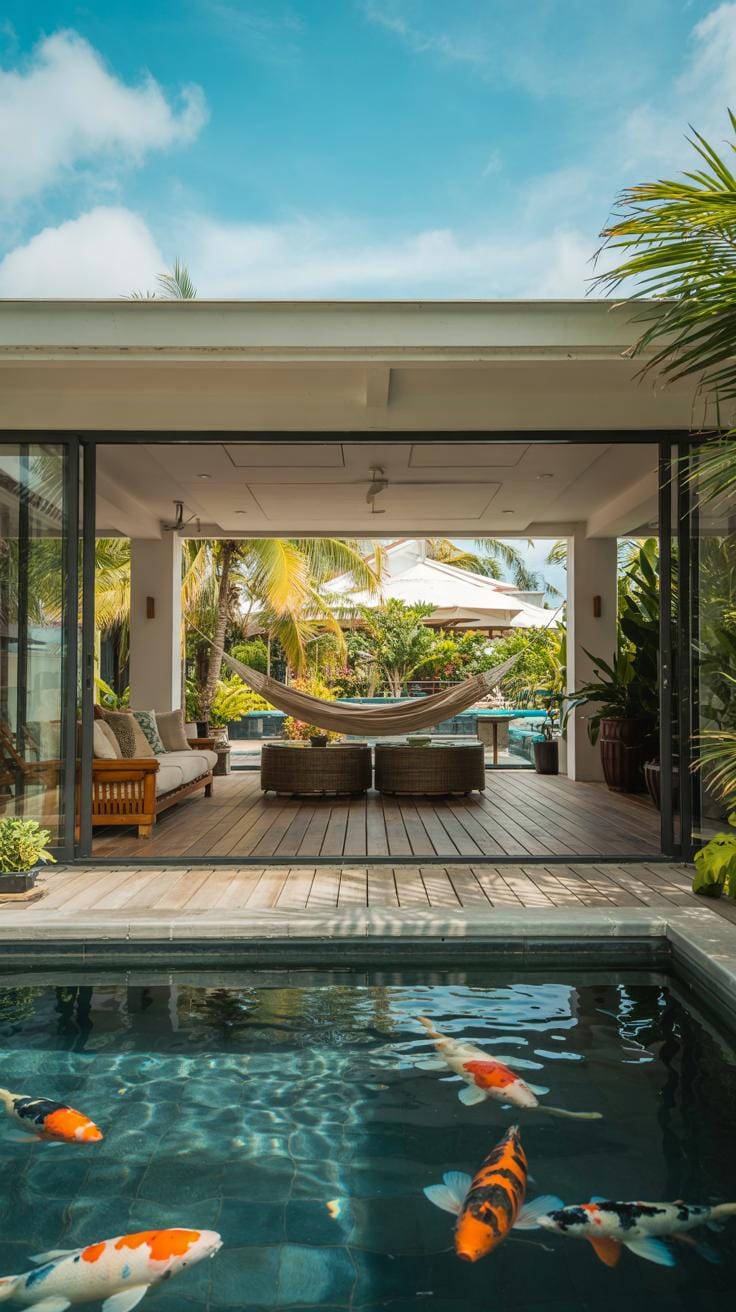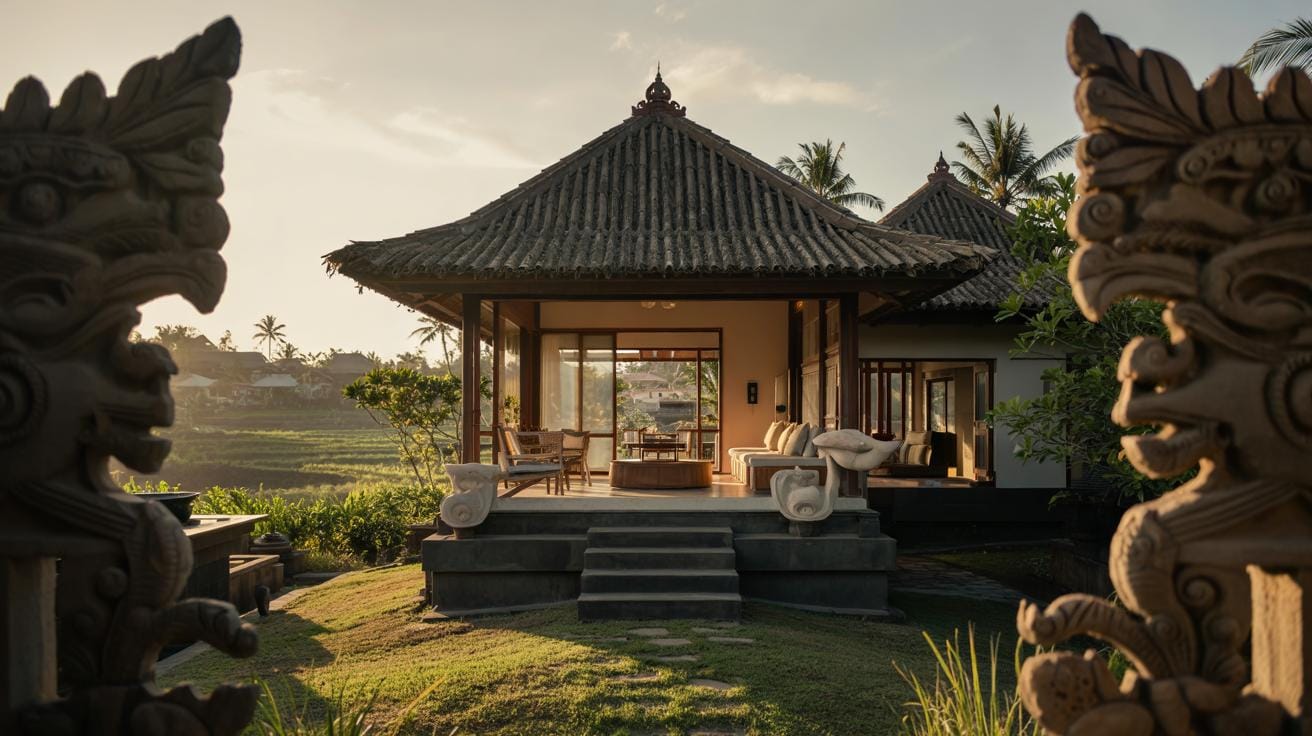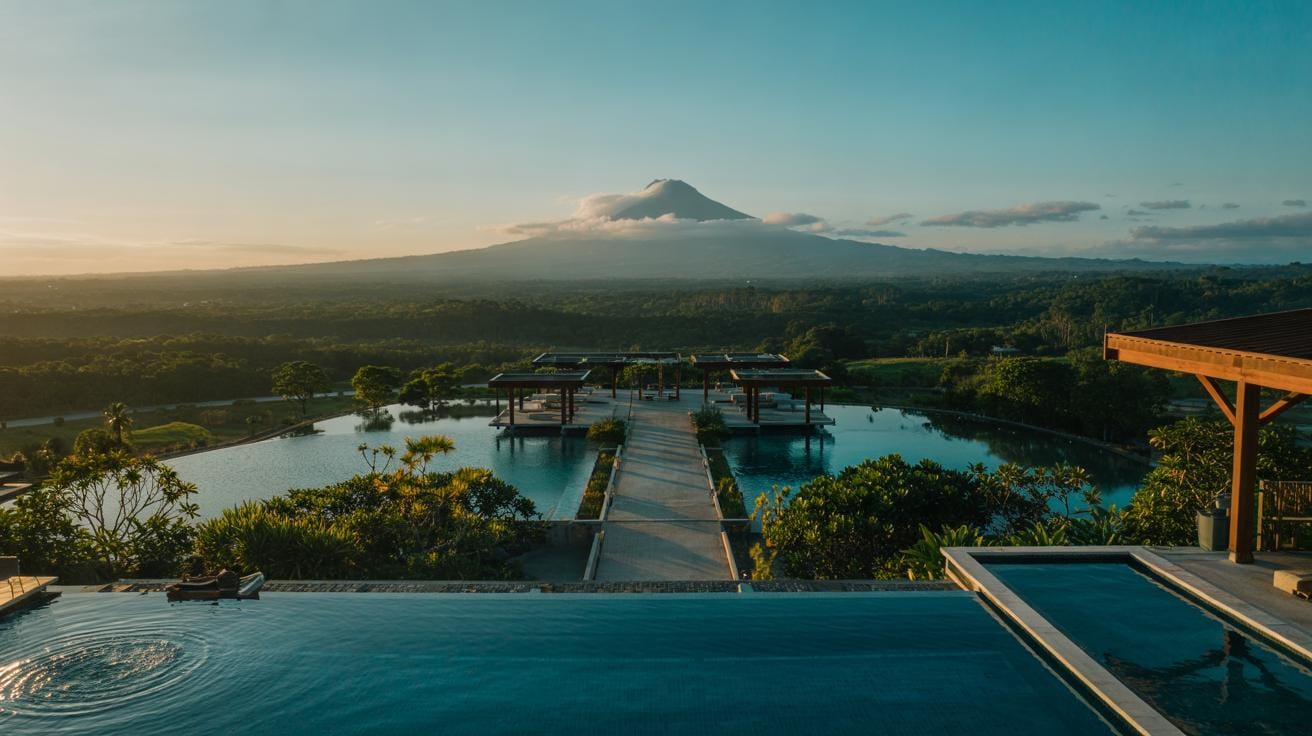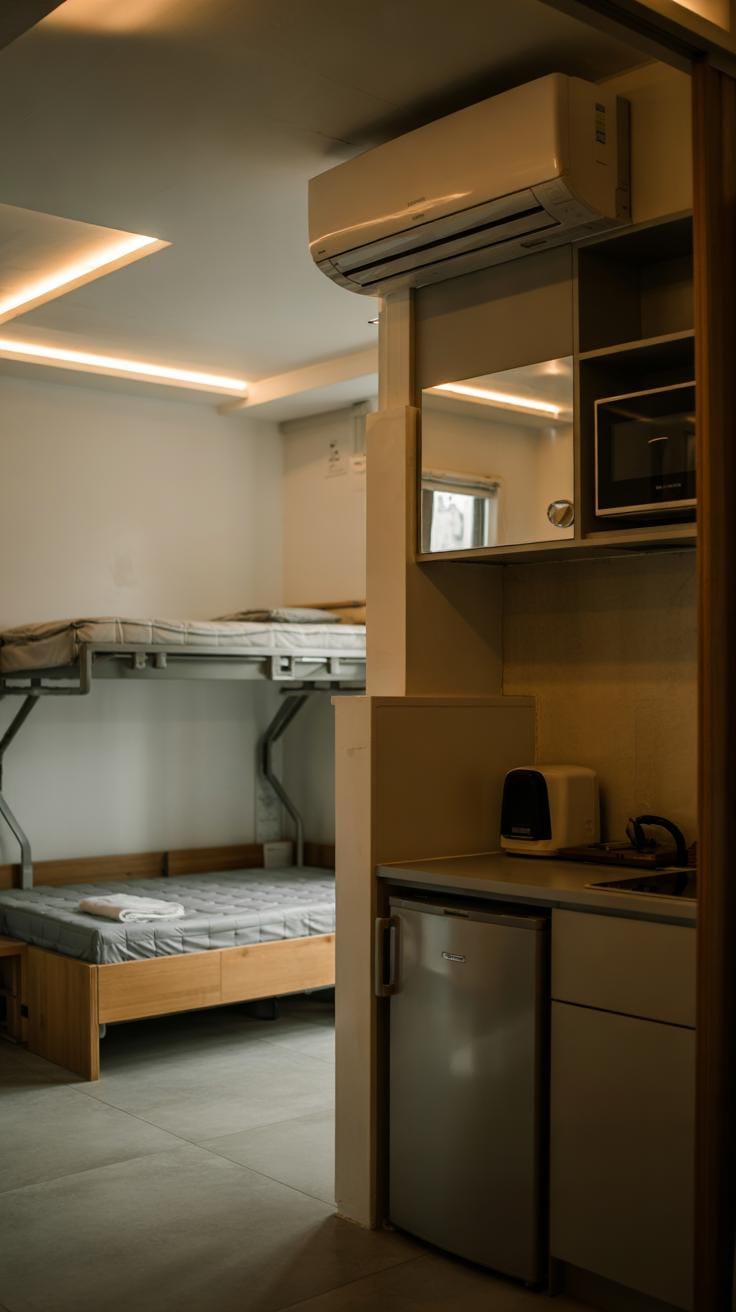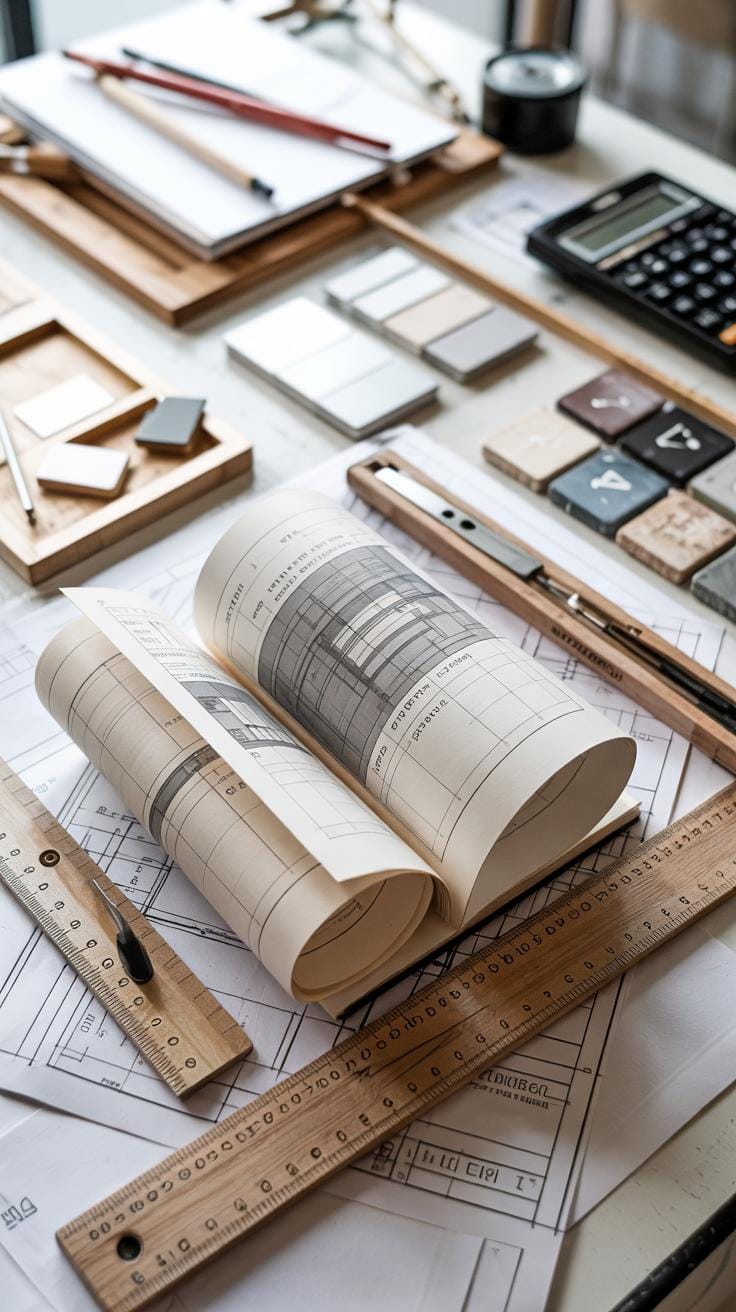Introduction
Owning a small tropical house brings unique charm and a relaxing atmosphere that many desire. However, renovating such a space involves challenges and opportunities specific to tropical environments and limited spaces. You need thoughtful strategies to create a functional and comfortable home that fits the tropical lifestyle while making the most of every inch. This article explores practical tips and clever ideas for renovating a small tropical house, helping you enhance its appeal and livability without extensive costs or complex procedures.
Understanding how to optimize your home layout, select suitable materials, and enhance natural airflow and lighting can transform your tropical house into a refreshing retreat. You will learn how to balance design with functionality and address climate considerations unique to tropical settings. Are you ready to turn your small tropical home into a place that feels spacious, stylish, and perfectly adapted to its environment? This guide will offer you clear, actionable insights to start your renovation journey effectively.
Understanding the Tropical House Environment
Tropical homes face unique environmental challenges that shape renovation choices. High heat pushes you to use light-colored roofing and walls to reflect sunlight and reduce indoor temperatures. Humidity encourages the use of materials that resist moisture and mold, such as treated wood, concrete, and certain metals.
Frequent, heavy rainfall demands sturdy roofing and effective drainage systems to prevent leaks and water damage. Ventilation plays a vital role in maintaining comfort by reducing trapped heat and moisture inside your house. You want your space to stay dry and cool without relying heavily on energy-consuming air conditioning.
How do these climate factors influence your design decisions? You might prioritize open layouts and elevated floors to avoid flood damage. Choosing the right blend of materials and building features can keep your tropical home durable and comfortable throughout the seasons.
Climate Considerations for Tropical Homes
Heat affects how your house absorbs and retains warmth. Walls and roofs made of concrete, metal with reflective coatings, or clay tiles handle high temperatures better than standard materials. Humidity can cause wood to warp or metal to corrode, so opt for treated timber, weather-resistant paints, or composite materials.
Storms can damage weaker structures. Reinforced framing and impact-resistant windows protect your home during heavy winds. You may want roof designs that reduce uplift, such as hip roofs or sloped metal sheets, to avoid damage.
Consider elevated floors and robust drainage to manage water efficiently. Floors raised on stilts or blocks limit flooding risks during heavy rain. These choices help your home withstand the tropical climate’s daily challenges without sacrificing style or function.
Incorporating Natural Ventilation and Shade
Maximizing airflow is key to cooling your tropical home naturally. Position windows and vents opposite each other to enable cross-ventilation. Wide, operable windows allow air to flow freely and carry heat away. Ceiling fans enhance this effect, creating a comfortable breeze.
Shading protects your home from direct sun, reducing heat buildup. Overhangs and verandas block sunlight while letting in fresh air. Planting trees or installing trellises with vines near windows offers natural shade and cools the surrounding air.
Think about how your landscaping can act as a heat barrier. Can you add shade without blocking airflow? Integrating these elements thoughtfully lowers indoor temperatures and minimizes your energy use for cooling, improving your home’s comfort and efficiency.
Maximizing Space in Small Tropical Houses
Space feels limited in small tropical homes, but smart design brings out their full potential. Multi-functional furniture helps make the most of every square foot. Think beds with built-in drawers or tables that fold away when not in use. These pieces reduce clutter and add storage without crowding your rooms.
Optimizing the layout creates open pathways and zones that suit how you live daily. Positioning furniture to encourage natural airflow cuts down on the need for bulky fans. Placing seating near windows lets you enjoy the breeze and the view, while leaving central areas free for easy movement.
Vertical storage taps into unused wall space. Shelves, hooks, and overhead racks store items off the floor, freeing up floor area. In tropical homes, elevating belongings also protects them from potential dampness or pests. Have you checked your walls for spots that could support strong, stylish shelving?
Optimizing Layout for Small Spaces
Arranging furniture in a small tropical house means balancing openness with purpose. Open floor plans work well when you connect the kitchen, dining, and living areas. This makes the space feel larger and encourages airflow.
Select furniture that suits the scale of your rooms. Avoid bulky sofas that block paths or windows. Instead, choose slim-profiled pieces or benches that double as storage. Angle seating to face natural light and allow easy access without crowding.
Use rugs and lighting to visually separate zones rather than walls. Consider floating furniture away from walls to boost cross-ventilation. How can your layout create a smooth flow from room to room while highlighting the tropical surroundings?
Smart Storage Solutions
Keeping clutter out of sight helps your small tropical house look tidy and spacious. Use built-in cabinets under stairs or raised platforms to hide items. Modular storage units can be customized to fit tight corners and odd spaces.
Incorporate baskets and boxes made from natural materials like rattan or bamboo. They add texture without overwhelming the style. Hooks and pegboards mounted near entryways hold keys, bags, and hats in easy reach.
Think about what you use daily and keep those things accessible. Store seasonal or less-used items higher up or in places that don’t interfere with movement. What storage spots can you create from areas you normally overlook?
Selecting Durable and Climate Appropriate Materials
Your small tropical house needs materials that stand up to heat, moisture, and pests. Choose flooring that stays strong and cool underfoot, like porcelain tiles or treated bamboo. These materials handle humidity without warping or cracking. For roofing, metal sheets with proper insulation work well. They reflect sunlight and resist heavy rain, preventing leaks and damage.
When renovating walls, concrete mixed with waterproof additives offers durability and keeps your home sealed against moisture. Alternatively, fiber-cement boards resist insects and decay, providing long-lasting protection without heavy upkeep. For finishes, go with moisture-resistant paints and varnishes that prevent mildew and maintain color under the tropical sun. These choices help you create a maintenance-friendly home that feels fresh and lasts longer.
Weather-Resistant Building Materials
Materials that survive heavy rain and high humidity are vital for a tropical house. Concrete is strong against water and wind, making it a reliable option. Galvanized steel or aluminum for roofing also holds up well against storms and rust. Pressure-treated wood resists insects and rot, but make sure it is properly sealed. Cement board siding withstands moisture and avoids mold, keeping your walls dry and stable. Flooring like natural stone or ceramic tiles stays cool and weatherproof, ideal for tropical heat.
Have you considered how harsh weather affects your home every season? Using weather-proof materials protects your renovation investment and keeps your space safe year-round.
Sustainable and Local Material Choices
Using locally sourced materials cuts down transport emissions and supports your community. Bamboo is one option; it grows fast, resists pests, and adds a natural look. Coconut lumber from fallen trees offers strong, sustainable wood. Clay tiles made nearby suit the climate and blend well with tropical style. These materials often cost less and match the local environment, improving your home’s comfort and appearance.
Choosing sustainable products reduces waste and energy use. It also helps maintain tropical ecosystems and limits exposure to harmful chemicals. How can your choices contribute to a healthier environment and a stronger local economy? Opting for local and eco-friendly materials can transform your renovation into a solution that benefits both you and your surroundings.
Enhancing Indoor and Outdoor Living Areas
Small tropical houses often face space challenges. You can expand your living areas by blending indoor and outdoor spaces. Creating large openings such as sliding glass doors or folding walls links your rooms directly to nature. This design invites fresh air inside and lets natural light fill your home, reducing the need for artificial lighting during the day.
Patios and decks serve as perfect outdoor extensions of your living room or kitchen. Pick materials for decks that stay cool underfoot, like natural wood or composite decking designed for tropical climates. Arrange seating areas where you can relax or entertain guests comfortably while enjoying the breeze and greenery.
Consider placing plants around these transition zones. They create a soft barrier and help maintain privacy without blocking the view. Have you thought about how much more spacious your home might feel when boundaries between inside and outside disappear?
Creating Seamless Indoor-Outdoor Transitions
To merge indoor comfort with tropical outdoor settings, use wide doorways that open fully. This removes visual and physical barriers between the interior and exterior. Installing screens or louvered windows controls airflow while keeping insects out.
Choose floor materials that flow between indoor and outdoor spaces, such as stone or treated wood. This continuity strengthens the connection between areas. Ceiling fans in covered patios offer comfort similar to that indoors.
Think about comfort during rainy seasons too. Covered outdoor areas with waterproof shading protect your space from sudden tropical showers. How can your home design encourage you to spend more time outside while staying cool and dry?
Utilizing Outdoor Spaces Effectively
Transform small outdoor areas into useful living zones by adding multi-purpose furniture like benches with storage or foldable tables. Compact lounges or hammocks create relaxing spots for reading or napping under the shade.
Incorporate vertical gardens or hanging planters if floor space is tight. They bring nature closer and improve air quality without crowding your yard. Lighting taps into evening use by providing soft illumination through solar-powered lamps or string lights hung overhead.
You might design a small herb or vegetable garden near your kitchen door. It adds freshness to your cooking and makes use of limited outdoor space. What kinds of outdoor activities do you want to support in your tropical home?
Choosing Energy Efficient and Sustainable Solutions
Think about how your small tropical house can save energy without losing comfort. Thoughtful renovation choices make a big difference in lowering energy use.
Using solar power is one way to cut down electricity bills. Solar panels capture sunlight and turn it into energy, perfect for sunny tropical areas. You can install a few panels on the roof without taking up much space.
Choosing efficient appliances helps reduce power consumption. Look for devices with good energy ratings, like LED lights or energy-saving fans. These use less electricity while keeping your home functional and bright.
Passive design elements also play a key role. You can plan windows, vents, and shading to cool your house naturally, which lowers the need for air conditioning. When was the last time you checked if your home’s layout traps heat or lets it out?
Every choice you make on your renovation affects energy use. Imagine reducing your bills and your carbon footprint at the same time.
Passive Cooling and Heating Techniques
Passive cooling keeps your tropical home comfortable without using electricity. Placing windows and vents to catch the breeze moves hot air out and pulls cooler air in. Think about arranging openings along the path of prevailing winds.
Shading is another smart tactic. Awnings, roof overhangs, and trees block direct sunlight. This prevents your walls and floors from heating up too much. Canopies over windows reduce glare while keeping rooms bright.
Using light-colored materials on roofs and walls reflects sunlight instead of absorbing it. Thermal mass, like thick stone or concrete floors, stores cooler temperatures and releases them slowly at night, balancing indoor temperatures.
Raising your house on stilts or using ventilated crawl spaces lets air flow beneath. This reduces heat buildup inside. Have you noticed how elevated homes feel cooler during hot days?
Renewable Energy Options
Solar panels are the most popular renewable energy source for tropical homes. You can choose compact systems designed for smaller houses, which save space and money.
Consider solar water heaters that use sunlight to warm your water. They reduce energy use from electric heaters and fit well with a tropical lifestyle.
Battery storage systems pair with solar panels to store energy for night use. This increases your home’s independence from the grid. How much would it matter to have power during outages or cloudy days?
Other clean energy options include micro wind turbines if your location gets steady breezes. Small-scale biogas units can also recycle organic waste into cooking fuel, closing the loop on energy use.
Choosing renewable energy technology means less reliance on fossil fuels and more savings long term. What steps can you take now toward a greener, more efficient home?
Incorporating Modern Amenities Without Overcrowding
You can bring modern plumbing, electrical systems, and appliances into a small tropical house without making it feel cramped. The key lies in careful planning and choosing compact, multi-functional items.
For plumbing, think about installing tankless water heaters that save space and energy. Use plumbing layouts that run walls vertically to avoid bulky pipes crossing rooms. Low-flow fixtures also reduce water use and require smaller pipes.
When adding electrical systems, use recessed outlets and switches to keep surfaces clear. Running wiring through the walls rather than adding surface conduits helps keep spaces clean. Position lighting fixtures so they double as décor and functional light sources.
Appliances designed for small spaces work best. For instance, a combination washer-dryer saves room and handles laundry efficiently. Modular refrigerators or cooktops let you add only what you need.
How would you design your layout to maintain an open feel while including these features? Focus on hidden storage and built-ins to keep surfaces free and maximize every inch.
Compact Kitchen and Bathroom Designs
Small tropical homes need kitchens and bathrooms that work well without wasting space. In the kitchen, consider an L-shaped or galley layout. These use walls effectively and leave room for movement.
Use wall-mounted shelves instead of cabinets that reach the floor. Open shelving can display dishes and keep the room airy. Select slimline appliances and install a single basin sink to save counter space.
Bathrooms benefit from corner sinks and compact toilets. A walk-in shower with clear glass partitions opens the room visually and prevents crowding.
Fixtures with sleek, simple lines reduce bulk. Materials like light-colored tiles reflect light and make these small spaces feel larger.
Can you imagine how rearranging just a few elements could change how your kitchen or bathroom feels and works every day?
Smart Home Features for Convenience
Smart home technology can improve your lifestyle and free up space in a small tropical house. Wireless control systems reduce the need for switches and panels on walls.
Install smart thermostats to adjust temperatures efficiently without large units. Automated lighting controls save energy and keep rooms well-lit without extra fixtures.
Smart speakers and assistants can replace bulky entertainment systems, letting you control music, security, and appliances by voice.
Compact smart kitchen gadgets, such as multi-function cookers or automatic coffee makers, reduce clutter.
Would adding these smart tools simplify your daily routine while keeping your home neat and spacious?
Balancing Privacy and Community Connections
Your small tropical house should feel like a personal retreat and a part of the neighborhood at the same time. Achieving privacy doesn’t mean shutting out your surroundings entirely. You can protect your personal space while keeping the atmosphere open for community ties and outdoor living. Think about how windows and doors face the street and neighbors. Position them to avoid direct views into your living areas. You might use frosted glass, adjustable shutters, or screens to shield private zones without blocking light or air.
Consider how outdoor spaces shape connections. Could a front porch or shared garden invite neighbors to stop by? Using natural plant barriers or fences of varying heights can create discreet boundaries. These boundaries let you enjoy quiet moments while still welcoming friendly interactions. How will you balance your need for solitude with your desire to engage in your neighborhood?
Designing for Personal Space
Inside your home, flexible partitions help create private spaces without shrinking the room. Sliding panels or folding screens work well, letting you open or close areas as needed. In areas that serve multiple functions, like a living room and guest space, these partitions give you control over personal zones.
Outdoors, landscaping plays a key role in privacy. Tall plants, hedges, or trellises with climbing vines can block unwanted views. Position seating and pathways to maximize these natural screens. Consider how a cluster of palms or bamboo can soften boundaries while adding to the tropical feel.
Ask yourself where you want quiet or solitude in both your indoor and outdoor spaces. Use partitions and plants to create those pockets of privacy without making your home feel closed-off.
Encouraging Outdoor Social Areas
Design your yard or porch as an inviting place for family and neighbors to gather. A small seating area with benches or lightweight chairs can encourage casual conversations. Adding a fire pit or outdoor dining table turns your outdoor space into a social hub for meals and storytelling.
Pay attention to shade and comfort. Install umbrellas or retractable awnings to make these areas usable even on hot days. Incorporate lighting to extend use into the evening. Small touches like planters with herbs or flowers brighten the space and spark conversation.
Do you have a spot where neighbors can stop by for a chat or your family can gather after a busy day? Creating easy access between inside and outside living areas helps maintain community ties while enjoying tropical fresh air.
Budgeting and Planning Your Renovation Project
Renovating a small tropical house requires careful budgeting and planning to avoid surprises. Start by listing all areas you want to improve and compare their costs. Can you update flooring now but delay a full kitchen remodel? Prioritize based on your daily needs and the home’s current condition.
Break your project into phases. Focus on repairs that improve safety and comfort first. Then add style and space improvements when funds allow. This approach keeps your renovation manageable and avoids overspending.
Track your expenses and include a contingency of about 10-15% for unexpected costs common in tropical climates, like moisture damage. Ask yourself: What changes will add the most value and convenience?
Solid planning protects your budget and helps you make thoughtful decisions. It also improves communication when working with contractors or designers.
Setting Priorities for Renovation
Decide which parts of your small tropical home need immediate work and which can wait. Address problems like roof leaks, faulty wiring, or poor ventilation right away. These affect your safety and comfort.
Next, focus on spaces you use daily, such as the kitchen or bathroom. Upgrading fixtures and storage here can improve your daily routine.
Cosmetic changes like painting or decorating can come later. Saving these for last helps you maintain focus on essential improvements first.
Ask yourself what will impact your comfort and the home’s performance the most. Which fixes will stop damage before it spreads?
Cost-Effective Renovation Tips
Stretch your budget by choosing durable materials suited for tropical weather, like treated wood or ceramic tiles. These last longer and reduce future expenses.
Reuse and repurpose where possible. Old furniture can be sanded and refinished. Salvaged materials from local sources often cost less and match the tropical style.
Consider energy-saving features like LED lighting and ceiling fans, which reduce utility bills and improve comfort without high costs.
DIY simple tasks such as painting or landscaping to save on labor costs. Which tasks can you confidently complete without risking quality?
Working with Professionals and DIY Options
Your small tropical house renovation will involve decisions about when to hire experts and when you can tackle projects yourself. Structural changes, electrical work, and plumbing require professional skills to meet safety standards and local codes. These jobs are complex and mistakes can be costly or dangerous.
You can take on simpler tasks like painting, installing shelves, or laying tile with some basic knowledge. These DIY projects help save money and let you add personal touches. Ask yourself: do you have the right tools and skills? Are you confident in finishing the job safely? Being honest will help you decide.
Working with professionals can streamline your renovation, but mixing DIY tasks lets you stay involved and manage costs. Knowing your limits prevents setbacks and keeps your project on track.
Hiring Skilled Renovation Experts
Structural work is the foundation of any renovation—poor support can cause serious issues. Hiring architects or structural engineers ensures your home stays safe and meets regulations. Professionals create proper plans that use space well and suit tropical climates.
Electrical and plumbing systems affect daily comfort and safety. Licensed electricians and plumbers install systems that handle heat, humidity, and storms without risk. Mistakes in wiring or pipes can lead to fire hazards or leaks.
Experts also bring knowledge of local materials and construction techniques. This saves you time and money by avoiding costly errors. Their experience can improve your home’s style and durability in the tropical environment.
Safe DIY Projects for Small Tropical Houses
There are many small but valuable tasks you can do yourself without risking safety. Painting walls or adding waterproof sealants to wooden surfaces protect your home from humidity and require minimal skill. Installing curtain rods, shelves, or light fixtures gives you more space and design control.
Gardening and landscaping around your home enhance curb appeal and can be handled on weekends. Learning basic tile installation or assembling furniture also suits beginners.
Safety should always come first. Use protective gear and follow instructions carefully. Take on projects you feel confident finishing. When unsure, consult guides or videos. This approach helps you balance involvement with a stress-free renovation.
Maintaining Your Small Tropical House Post Renovation
Keeping your renovated tropical home in good shape takes ongoing effort. Tropical weather can cause fast wear, so regular upkeep must be part of your routine. Checking for cracks in walls or damage to roofing helps you catch problems early before they become costly. Pay attention to doors and windows to ensure they close tightly and keep moisture out. Look at wooden surfaces for signs of swelling or mold caused by humidity.
Metal parts like hinges or outdoor fixtures may rust quickly due to salty air. Wiping them down and applying protective coatings will extend their life. Drainage systems also need inspection to prevent water buildup near your foundation. Simple tasks like clearing gutters and trimming back plants can reduce moisture around your house, lowering the chance of structural damage and mold growth.
When was the last time you checked your home’s exterior thoroughly? Identifying small issues saves time and money. Regular maintenance preserves the style and comfort you worked hard to create during renovation.
Routine Maintenance and Inspections
You should examine your house every few months. Look closely at the roof for missing or loose shingles, which let water seep in. Check exterior walls for cracks or peeling paint, signs that moisture may be entering. Inspect your windows and doors for tight seals. Loose seals pull in humid air, causing damage inside.
Timely cleaning of gutters and downspouts keeps rainwater flowing away properly. Blocked drainage invites water to pool around your home’s base, weakening foundations. Watch out for wood rot or mold by touching surfaces and looking under furniture or decks.
Simple inspections like these reduce long-term repair costs and keep your house ready for the humid tropical climate. Are you scheduling these checks regularly in your home care plan?
Protecting Against Tropical Pests
Tropical climates attract pests like termites, mosquitoes, and rodents, each threatening your home differently. Termites can weaken wooden structures quietly. Avoid wood-to-soil contact by using concrete pads or metal barriers under supports. Treat wood with safe insect repellents designed for tropical areas.
Mosquitoes breed in standing water easily found near house corners or pots. Keep your yard free of stagnant water by emptying containers and fixing leaks. Use fine mesh screens on windows and doors to stop mosquitoes from entering your home.
To deter rodents, seal small openings around plumbing or vents where they can sneak inside. Keep food sealed and dispose of garbage promptly to avoid attracting them. Regular pest inspections can spot problems before infestations grow. What pest control steps are you currently using to protect your tropical home?
Conclusions
A small tropical house renovation demands thoughtful planning and practical solutions focused on maximizing space and adapting to the climate. By applying strategies such as optimizing airflow, using weather-resilient materials, and smart storage solutions, you can significantly improve comfort and function. These improvements contribute to a home that supports your lifestyle and meets the challenges of a tropical environment effectively. Remember that flexibility and creativity during renovation help you make the most of the space and available resources.
The key to a successful renovation lies in blending design with nature, maintaining simplicity while enhancing style and comfort. Your small tropical house can become a well-organized, inviting space that perfectly fits your needs. You have the power to transform your home using these practical renovation tips. Consider your goals, plan carefully, and move forward confidently to achieve a refreshed tropical home that offers lasting satisfaction and enjoyment.

